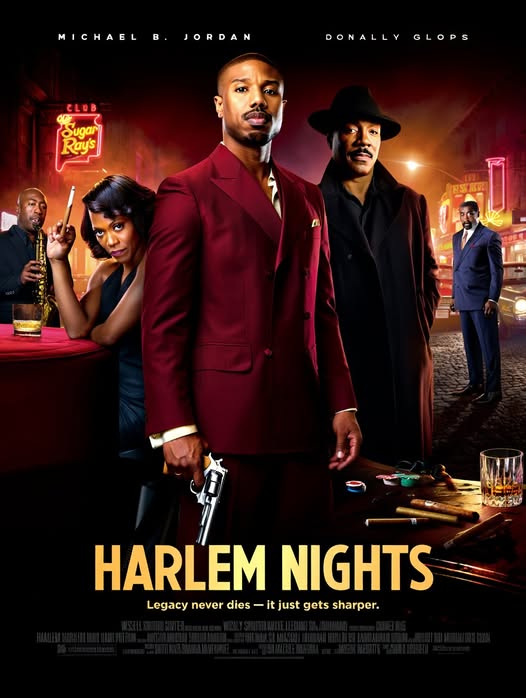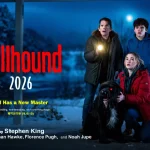🎞️ Harlem Nights (2026) — The Rhythm of Survival

There are films that entertain, and then there are films that breathe. Harlem Nights (2026) is one of those rare stories that feels alive — pulsing with the rhythm of jazz, the ache of memory, and the tension of a city standing at the edge of change.

The film opens with a haunting image: Sugar Ray’s Club, once the heartbeat of Harlem’s nightlife, now standing in ruin under the shadow of new glass towers. Time has moved on — but Eddie Murphy’s Quick hasn’t forgotten what this place once meant. His return to Harlem isn’t just about business; it’s about legacy, pride, and the fight for the soul of a neighborhood he once ruled with charm and wit.
Eddie Murphy delivers a deeply textured performance — older, quieter, but sharper than ever. The humor is still there, but it’s wrapped in melancholy. This isn’t the cocky hustler from 1989’s original film; this is a man who has lived long enough to see his dreams gentrified and his culture commodified. There’s something beautifully tragic in the way Murphy plays him — every smile feels like a defense against pain.

Enter Samuel L. Jackson, in one of his most magnetic roles in years. As the new Harlem kingpin — a crime lord cloaked in politics and corporate power — he represents a modern kind of danger. He doesn’t run the streets; he owns them through contracts, construction deals, and city hall whispers. Jackson brings his trademark fire but tempers it with calculation. His every word drips with menace and intelligence — a perfect foil for Murphy’s street-earned wisdom.
What sets Harlem Nights (2026) apart is its emotional duality. Beneath the bullets and business, it’s a story about generational responsibility — about what happens when a man who once built an empire must defend it against a new world that no longer plays by his rules. Harlem itself becomes a character — both decaying and reborn, still singing, still fighting.
Director Eddie Murphy crafts the film like a jazz composition — improvisational yet precise. The camera glides through smoky clubs and neon-lit alleys, lingering on faces, on music, on silence. Every frame feels steeped in nostalgia, yet refuses to drown in it. The cinematography glows with golden warmth, then cuts to the cold blue of modern towers, echoing the clash between past and present.

The dialogue snaps and hums with rhythm — half comedy, half sermon. When Murphy and Jackson share the screen, it’s cinematic lightning. Their exchanges are layered with history, regret, and grudging respect. It’s not just a gangster showdown — it’s a philosophical debate about what Harlem is and who gets to define it.
Supporting performances round out the film’s soul — younger actors portraying a generation caught between rebellion and assimilation, unsure whether to fight for their heritage or cash in on it. The film doesn’t offer easy answers. It asks you to sit in the discomfort of change, to feel both pride and loss.
By its final act, Harlem Nights (2026) transforms from a crime drama into something almost elegiac. It’s about love — love for a place, a people, a time that refuses to fade quietly. When the jazz swells one last time, and Murphy walks through the flickering lights of Sugar Ray’s, it feels less like an ending and more like a benediction.

Sharp, soulful, and unforgettable — Harlem Nights (2026) isn’t just a sequel; it’s a resurrection. A film that mourns the past but dares to sing for the future.
Related movies:









